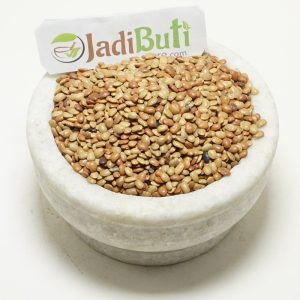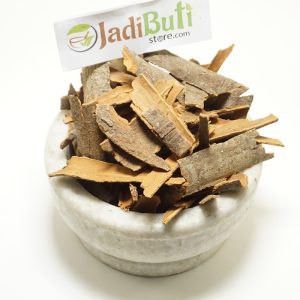D
Showing all 8 results
-


BEEJ GAJAR – बीज गाजर – CARROT SEEDS – DAUCUS CAROTA
₹80.00 – ₹615.00Quick ViewBEEJ GAJAR – बीज गाजर – CARROT SEEDS – DAUCUS CAROTA.
GAJAR Name in different languages:
GAJAR English Name : Carrot
GAJAR Hindi Name : Gajar, Gajra
GAJAR Latin name : Daucus carota Linn.
GAJAR Urdu Name : Gajar
GAJAR Arabic Name : Jazar, Istufleen, Nahshal, Subaat’iyya
GAJAR Bengali Name : Gajar
GAJAR Chinese Name : Hu luo bo
GAJAR French Name : Carotte cultivé
GAJAR German Name : Karotte, Möhre
GAJAR Gujarati Name : Gajar
GAJAR Kannada Name : Gajjari
GAJAR Kashmiri Name : Gazer, Gazaer
GAJAR Marathi Name : Gajar
GAJAR Persian Name : Gazar, Zardak
GAJAR Punjabi Name : Gajar
GAJAR Sanskrit Name : Garjara, Shekhamulama
-

 SOLD OUT
SOLD OUTGangeran chhal – Grewia tenax – Phalgu or Dhaman
₹140.00 – ₹1,110.00Quick ViewGangren chhal | Phalgu or Dhaman
Scientific name: Grewia tenax | Family: Malvaceae
Ayurvedic Property Description Rasa (taste) Madhura (sweet), Amla (sour) Guna (qualities) Guru (heavy), Snigdha (unctuous, oily) Virya (potency) Sheeta (cold) Vipaka (post-digestive effect) Madhura (sweet) Dosha Effect Balances Pitta and Kapha, increases Vata in excess Active Compound Benefits Flavonoids (kaempferol, quercetin, myricetin, and rutin) Antioxidant, anti-inflammatory, and immune-boosting properties Triterpenoids (ursolic acid, oleanolic acid, and betulinic acid) Anti-inflammatory, antitumor, and hepatoprotective properties Phenolic compounds (gallic acid, catechin, epicatechin, and ellagic acid) Antioxidant, anti-inflammatory, and anti-cancer properties Vitamins (ascorbic acid, carotenoids, and tocopherols) Antioxidant, immune-boosting, and anti-aging properties Fatty acids (linoleic acid, oleic acid, and stearic acid) Anti-inflammatory and skin-protective properties Minerals (calcium, potassium, magnesium, and iron) Essential for maintaining healthy bones, muscles, nerves, and blood cells -


Kachi khand (Organic) – कच्ची खांड – Candy sugar – Desi Khand
₹155.00 – ₹635.00Quick ViewKhandsari sugar, Kachchi Khand is typically brown or golden in color, Cold in Potency and has a granular texture. It is commonly used in Indian cuisine to sweeten desserts and beverages, and is also used in the production of traditional medicines.
In recent years, there has been a growing interest in Khandsari sugar as a healthier alternative to refined sugar. It is believed to be more nutritious and contain more minerals and antioxidants than refined sugar, and it has a lower glycemic index, which means that it does not cause a rapid spike in blood sugar levels.
-


Kulthi Dal (Organic) – कुल्थी दाल – Horse Gram – Dolichos biflorus
₹285.00 – ₹620.00Quick ViewKulthi dal, also known as horse gram, is a type of legume that is commonly used in Indian cuisine. It has been used in Ayurvedic medicine for its various health benefits. Here are some Ayurvedic properties and benefits of kulthi dal:
Ayurvedic Properties:
- Rasa (Taste): Pungent, Astringent
- Virya (Energy): Heating
- Vipaka: Pungent
- Guna (Quality): Light, Dry
Ayurvedic Benefits:
- Weight Loss: Kulthi dal is low in calories and high in protein, making it an ideal food for weight loss.
- Digestive Health: Kulthi dal is considered a digestive stimulant and may help alleviate digestive issues like constipation and diarrhea.
- Kidney Health: Kulthi dal is considered a diuretic and may help improve kidney function and prevent kidney stones.
- Diabetes Management: Kulthi dal may help regulate blood sugar levels and can be beneficial for people with diabetes.
- Respiratory Health: Kulthi dal is used in Ayurveda to treat respiratory conditions like asthma, bronchitis, and coughs.
- Skin Health: Kulthi dal is used in Ayurveda to treat skin conditions like acne and eczema.
Note: The information provided is for educational purposes only and is not intended to diagnose, treat, cure, or prevent any disease. Please consult with a qualified healthcare practitioner before using herbal products, especially if you are pregnant, nursing, or taking any medications.
-


Sugar Badam – शुगर बादाम – Diabetes Almond – Swietenia Macrophylla
₹140.00 – ₹1,100.00Quick ViewSugar Badam is also known as Sugar Badam Kadwa, Samundari Badam, Miracle Fruit, Sky Fruit, King Fruit, Diabetes Bitter Almonds, Samundari Badam, Miracle Fruit, Sky Fruit, King Fruit.
Suagr Badam Name in different languages:
Suagr Badam in English – Sweet almond
Suagr Badam in Hindi – Baadam (Meetha)
Suagr Badam in Latin – Prunus amygdalsu
Suagr Badam in Sanskrit – Vatad (Madhur), Vatabh, Vatbeeri, Netropam phal
Suagr Badam in Marathi – Baadam
Suagr Badam in Gujrati – Baadam
Suagr Badam in Bengali – Bilayati baadam
Quality:
Sweet almond is heavy, smooth, sweet, hot and stimulant. It brings the stool out easily. It is expectorant. It increases the bile and urine. Sweet almond enhances sperm count, body strength and vigour. It also increases breast milk and regulates disturbed menstrual excretion. It makes the nerves-system strong. Sweet almond is used in the cases of vattadisorders, weaknesses of nerve and brain, dyspepsia, cough caused by Vatta, anuria and dysuria, white leucorrhoea and dysmenorrhoea.






